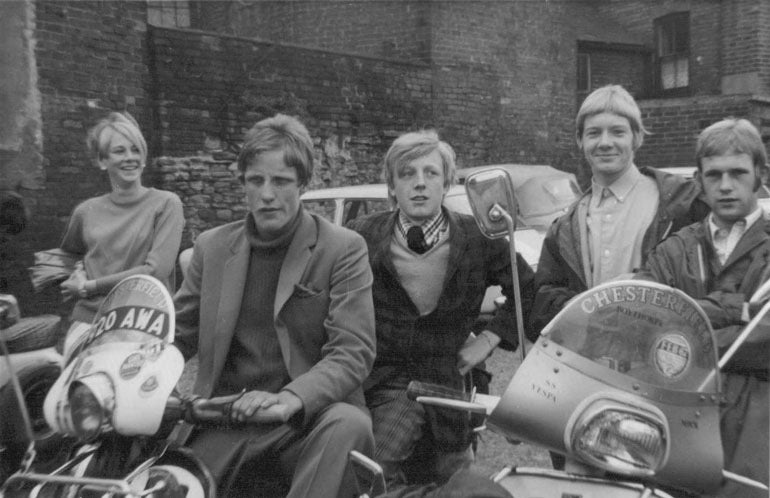The Mods : The rise of British youth subcultures
What is it about British kids who would not dream of dressing like their dads? Post war subcultures with their various musical genres might have had their roots in the USA, but they seem to be a particularly British, and especially London, thing.

Unlike booming America, life in mid 1950s Britain was drab by comparison. The country was still feeling the effects of the war and demob suits, cloth caps and class distinction were the order of the day for most men. Remember that rationing did not end until 1954. The early baby boomers were just coming of age and were deciding to live differently.
Rockers had their British motorbikes, jeans, Lewis leather jackets, boots and early rock and roll. Other kids were listening to the 50s jazz of Miles Davis and had a more Modernist outlook. They started looking to Europe for style ideas though French and Italian art movies, and mixed this with the Ivy look the jazz musicians were wearing. The Mods were born.
Early London Mods in the late 50s and early 60s were getting suits made to measure at places like Sam Arkus on Berwick Street. You needed a slim cut Tonic Mohair and with that it was button down shirts. First from American brands like Brooks Brother and Arrow and Hathaway, available at places like Austin American and Mans Shop on Shaftesbury Avenue. Then in 1963, Ben Sherman shirts starting being made from a factory in Brighton and a home grown button down was born. True to Ivy, the shoes were Penny Loafers with new additions like American army surplus fishtail parkas from shops in the East End and the Famous Lawrence Corner off the Euston Road.
The music moved on to Soul, R&B and Jamaican Ska as they felt that Black music ruled the urban night and you had to look good dancing to it. All-nighters were fuelled with amphetamines which were still legal to buy and were thought to be a more modern way of lasting the night rather than alcohol.
The whole look was becoming more main stream, with bands like the Small Faces and the Who sporting it. The media had its role in promoting the Mod look, first in the coverage of the seaside clashes with the Rockers and then with the tv program Ready Steady Go in 1963. By the mid 60s, things were tailing off with the whole look becoming commercial menswear and the original Mods starting to settle down. In the North a love of Soul continued with the Northern Soul scene, and, in London, the harder edges of Mod culture were evolving into another look: the Suede Heads. That’s another story of the Skins.
